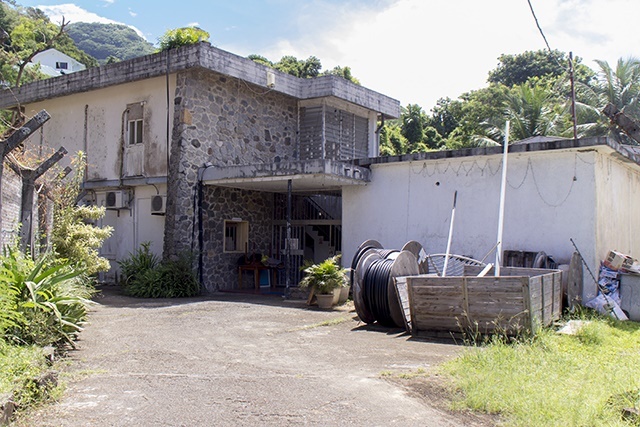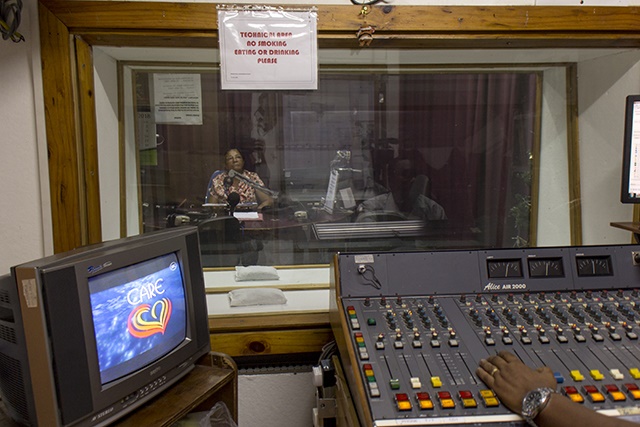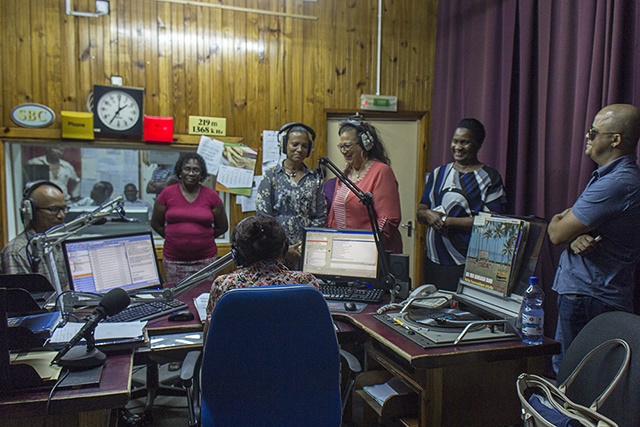Iconic 53-year-old radio station to be demolished, paving way for new Seychelles Broadcasting house

The 53-year-old building started its operation as a Tourism and Information centre in 1965 and became Radio Seychelles in July the same year. (Salifa Karapetyan)
(Seychelles News Agency) - Seychelles’ first radio station is being demolished on Saturday, making way for a new modern national broadcasting house to be completed in 2020.
The 53-year-old building started its operation as a Tourism and Information centre in 1965. On July 10 that same year, Radio Seychelles went on the air for the first time.
The new Seychelles Broadcasting Corporation House will be built at the same location at Union Vale on the outskirts of the capital city of Victoria. Once completed the state-of-the-art broadcast centre will station the national TV, Radio Sesel and Paradise FM.
The Seychelles Broadcasting Corporation (SBC) received the financial assistance to build the new broadcasting house and purchase new equipment under an economic and technical cooperation agreement signed with China in 2016.
Work on the SBC House will start soon after the demolition and clearing works are done. The studio – now relocated to the Seychelles Broadcasting Corporation premises at Hermitage - was used for a final transmission on Wednesday last week.
Dawson Sinon was one of two Seychellois employed full time when Radio Seychelles was launched. Sinon worked with the radio station 43 years before retiring.
“I was privileged to have a fulfilled career at the radio, but I was not really thinking of the radio when I left school in 1963. In fact, I joined the Public Works Department in 1964 and ironically was involved in the construction of the building which started that year,” said Sinon.
Sinon explained that construction was carried out on a marsh reclaimed by prisoners housed at a nearby prison at Union Vale. Sinon said that it was the late Davidson Chang Him who encouraged him to join the radio station as a technician.
According to Sinon, the launching of the radio revolutionised life in Seychelles – a group of 115 islands in the western Indian Ocean.
“One thing was that it changed how information was disseminated. One simple example was, one could now use the radio to announce the death as well as funeral details of a loved one, making it easier for relatives to get the news, otherwise people would have to walk to bring the news,” explained the retiree.
 |
 |
| Sinon said the launching of the radio revolutionised life in Seychelles. (Salifa Karapetyan, Seychelles News Agency) Photo License: CC-BY |
Pat Matyot joined the radio in April 1978. His first and only job after he left school as he is still working with SBC. Matyot said that the building has a lot of sentimental value for him. “This place is associated to many pioneers in radio broadcasting who are no longer with us. We are thinking of Gilbert Confait, Marjorie Baker, Madge Belle, Douglas Cedras, amongst others whose voices animated audiences.”
Matyot said that the place has a lot of memories. “I am thinking of my own personal development and growth, as when I joined as I was practically a DJ, but then I was sent to the newsroom and developed as a journalist,” said Matyot.
Matyot said many funny moments will stay in his memories. "One is when someone brought and let loose a chicken in the studio. So you can imagine the panicked announcer trying to remain focused on air at the same time that a panicked chicken runs around,” recounts Matyot.
Matyot said that some other incidents will stay with him but for other reasons. “One frightening experience was when the mercenary came in November 1985. We were kept at the station for a whole night and we were scared because we did not know if they had taken the country hostage.”
Sinon shared his scariest moment at the radio was when there was a rebellion and when army officers took control of the station. “They came to my house and took me in the early hours. They brought me to the radio and we had to broadcast whatever they told us,” explained Sinon.
“Then there was the incident when the station was blown up. This was in May 1971 and the explosion totally destroyed the transmitters,” said Sinon. The explosion occurred when there was no one at the premises.
Sinon said that the radio went off the air for about a month. “We then received a transmitter from Cable and Wireless and could transmit temporarily from the Carnegie Hall,” adds Sinon.
Local historian Tony Mathiot said that the opening of the radio introduced international music to the island nation. “People would bring vinyl records to the station and soon songs like Sloop John B by the Beach Boys and Please Release Me by Engelbert Humperdinck would fill the airwaves,” said Mathiot.
Once it opened in 1965, the station started broadcasting for four and a half hours on weekdays. Local news items and announcements were broadcasted in English and Creole. New programmes were also introduced, such as local advertising in both languages. A programme of lunchtime music and another focusing on items of interest to the Creole-speaking listeners was broadcasted late in the evening.





